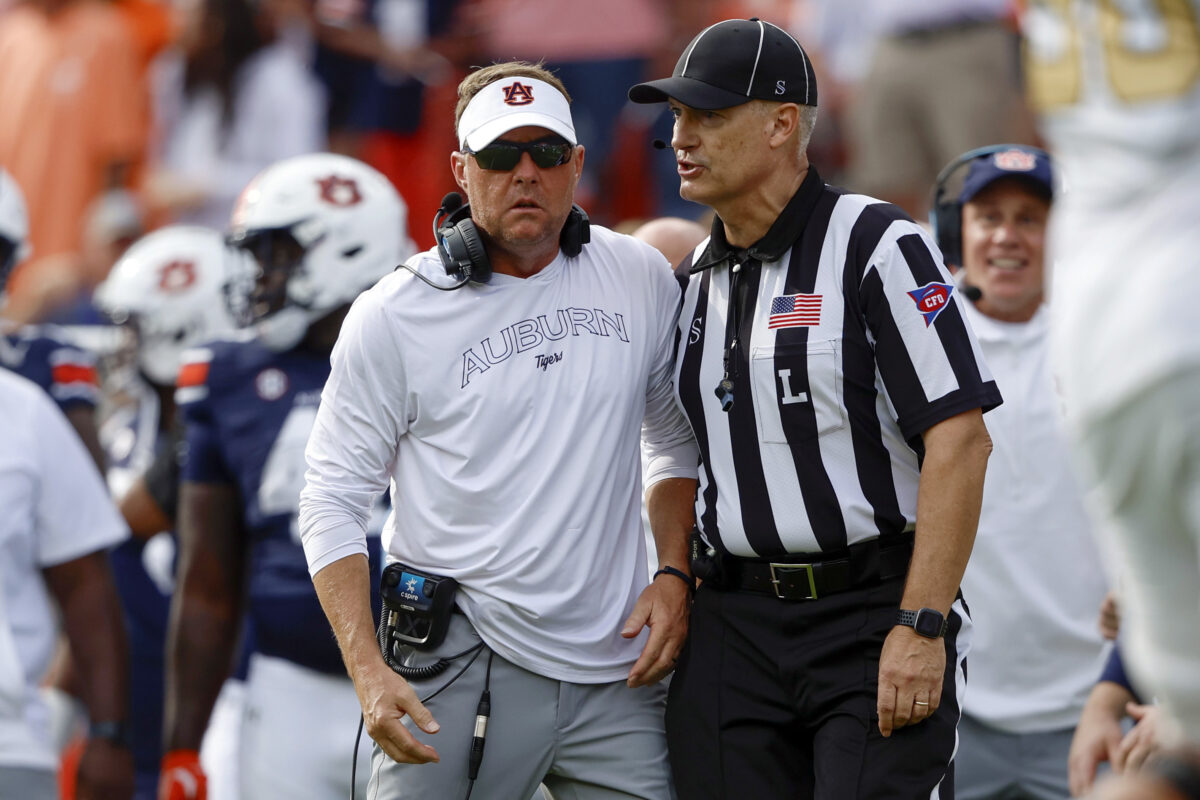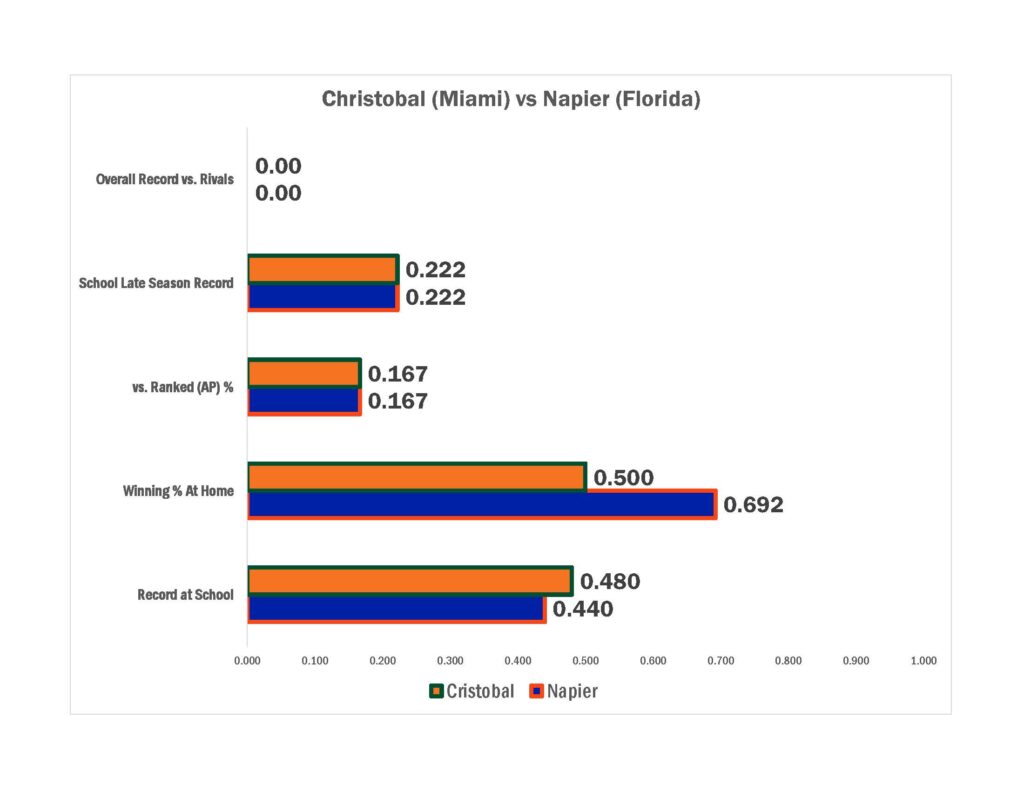Blog Article
Hugh Freeze Has 2 Games To Save His Job At Auburn. Here’s Why Saturday Night’s Matchup Against #10 Georgia At Jordan-Hare Stadium Is Game 1 Of His Final Stand
7:30 PM EDT. Jordan-Hare Stadium. Lights. Chaos. Everything on the line.
This isn’t just another SEC game.
This is Hugh Freeze fighting for his job. This is Auburn desperate for relevance after back-to-back losses. This is Georgia trying to stay in the playoff hunt on the road, at night, in one of the most dangerous venues in college football.
Let me break down exactly what’s about to happen.
The Numbers Don’t Lie (But Jordan-Hare At Night Doesn’t Care)
Georgia is the better team on paper.
Georgia’s Offensive Dominance:
- 438.6 yards per game (96.4 more than Auburn)
- 34.6 points per game
- Perfectly balanced: 231.8 passing, 206.8 rushing
- 3.2 rushing touchdowns per game
- 24.8 first downs per game
Auburn’s Offensive Struggles:
- 342.2 yards per game (bottom-tier SEC)
- 27.6 points per game
- Anemic passing: 173.2 yards, 1.0 TD per game
- Only scored 10 points at Texas A&M
Georgia should win by double digits.
But here’s what the stats don’t tell you: Auburn at night in Jordan-Hare has produced some of the most inexplicable upsets in college football history. The “Kick Six” against Alabama. Stunning wins over LSU, Georgia, and other powerhouses who had no business losing.
Strange things happen here after dark.
What To Watch: Georgia With The Ball
Can Auburn’s elite run defense hold?
This is the marquee matchup of the game. Auburn allows only 82 rushing yards per game at 2.7 yards per carry. That’s legitimately elite. But Georgia rushes for 206.8 yards per game at 4.8 yards per carry with over 3 rushing touchdowns per game.
Something’s gotta give.
If Auburn stacks the box to stop the run, Georgia will torch them through the air. If they play honestly, Georgia will run them over. There’s no good answer for Auburn’s defensive coordinator.
The balance problem Georgia creates:
Georgia doesn’t just beat you one way. They beat you every way. 231.8 passing yards per game. 206.8 rushing yards per game. Perfectly balanced, impossibly difficult to defend.
Auburn has to pick its poison.
In a night game where crowd noise makes communication difficult, Georgia’s ability to run the ball becomes even more valuable. No audibles needed. Just line up and impose your will.
Watch the first down battle:
Georgia averages 24.8 first downs per game. Long, methodical drives that keep Auburn’s defense on the field and completely gassed by the fourth quarter.
If Georgia controls the clock and sustains drives, Auburn’s offense won’t get enough possessions to keep pace. And with Auburn averaging only 27.6 points per game, they need every possession they can get.
Can Georgia handle the noise?
Here’s Georgia’s biggest weakness: 40.8 penalty yards per game. False starts. Holding calls. Drive killers.
Now put them on the road, at night, in one of the loudest stadiums in America. Communication becomes nearly impossible. The crowd will be absolutely deafening on every Georgia snap.
If Georgia beats itself with penalties, Auburn has a chance.
What To Watch: Auburn With The Ball
Can Auburn throw the football at all?
This is the existential question for Hugh Freeze’s offense.
173.2 passing yards per game. Only 1.0 passing touchdown per game. Those are borderline FCS numbers in the modern SEC. You cannot win big games with that level of offensive production.
Georgia’s pass defense allows 231.2 yards per game, which means Auburn should be able to exploit it through the air. But “should” and “can” are two very different things.
If Auburn comes out scared and conservative in the passing game, they have no chance. If Hugh Freeze opens up the playbook and takes shots downfield, they might be able to keep Georgia honest enough to run the ball effectively.
The ghost of Texas A&M:
Auburn scored 10 points at Texas A&M. Ten.
That performance haunts everything about this game. Can Auburn’s offense show up when it matters most? Or will they shrink under the pressure and the lights?
The first quarter will tell you everything you need to know.
Ball security is victory:
Auburn’s best stat: 0.2 turnovers per game. Elite ball security. Georgia commits 1.4 turnovers per game.
If Auburn takes care of the football and Georgia coughs it up twice, suddenly you’ve got short fields and momentum shifts. That’s how upsets happen.
One Auburn turnover probably ends the game. Zero Auburn turnovers gives them a legitimate puncher’s chance.
Time of possession will decide this:
Auburn averages 342.2 total yards per game. That’s not enough to win a shootout.
So they have to shorten the game. Long, grinding drives that keep the clock moving and Georgia’s explosive offense on the sideline. Lean on the run game (169 yards per game, 2.4 TDs). Control the tempo.
If Auburn gets into a track meet, they lose by three touchdowns.
Hugh Freeze’s bag of tricks:
When coaches are fighting for their jobs at home under the lights, desperation breeds creativity.
Watch for fake punts, trick plays, ultra-aggressive fourth down calls. Hugh Freeze knows conventional football won’t beat Georgia. He needs chaos, misdirection, and a little bit of magic.
At night, Jordan-Hare is the perfect stage for desperation to become brilliance.
What Each Team Brings To This Party
Georgia’s Advantages:
- Superior talent across the board
- Balanced, explosive offense that can beat you any way
- Already won at #15 Tennessee (proven road warriors)
- Playoff desperation creates focus
- Better coaching, better depth, better everything
Georgia’s Vulnerabilities:
- Turnover prone (1.4 per game)
- Penalties on the road in hostile environments
- Might overlook Auburn after beating Kentucky
- Playing at the most dangerous venue in America
Auburn’s Advantages:
- Home field at night (worth 10-14 points in chaos)
- Elite ball security (0.2 turnovers per game)
- A stout run defense that can slow Georgia down
- Nothing to lose, everything to gain
- Desperation creates superhuman effort
Auburn’s Vulnerabilities:
- Offensive ineptitude (96.4 fewer yards per game than Georgia)
- Can’t throw the football consistently
- Two-game losing streak in SEC play
- The talent gap is real and significant
The matchup heavily favors Georgia.
But the environment heavily favors chaos. And chaos is Auburn’s best friend.
Final Score Prediction: Georgia 31, Auburn 20
But here’s what you need to understand.
This prediction is based on logic, statistics, and talent evaluation. Georgia is the better team. They should win.
But night games at Jordan-Hare Stadium don’t follow logic.
Here’s how I see it unfolding:
First Quarter: 7-7. Auburn comes out absolutely possessed. The crowd is deafening. Georgia struggles with false starts and communication. Auburn feeds off the energy.
Second Quarter: 17-13 Georgia. Talent starts to show, but Auburn refuses to fold. A trick play or defensive turnover keeps them within striking distance. Jordan-Hare is absolutely electric at halftime.
Third Quarter: 24-20 Georgia. Back and forth. Every Georgia score gets answered. The crowd never sits down. Auburn is in this thing.
Fourth Quarter: 31-20 Georgia. Superior depth and offensive firepower finally create separation. Auburn’s limited offense can’t generate enough to keep pace over 60 minutes.
That’s the logical outcome.
But don’t be shocked if Auburn wins outright. I give them a legitimate 30-35% chance to pull the upset. That’s not “Auburn might get lucky.” That’s “Auburn has a real path to victory if a few things break their way.”
Georgia fumbles twice. Hugh Freeze calls the game of his life. The crowd forces three false starts at crucial moments. Auburn’s defense gets a pick-six.
Suddenly, it’s 27-24 Auburn with 5 minutes left, and Georgia is shell-shocked.
It can happen. It has happened. This is Jordan-Hare at night.
What This Means For Hugh Freeze
If Auburn loses 31-20:
On paper, it looks “respectable.” A competitive home loss to #10 Georgia.
But Auburn fans won’t see it that way. They’ll see an offense that still can’t score more than 20 points against quality competition. They’ll see a wasted opportunity on the biggest stage with the entire fanbase behind them.
Top 5 hot seat status: Confirmed.
If Auburn wins:
Season saved. Freeze becomes an overnight hero. The “Hugh Freeze can’t win the big one” narrative gets torched. Suddenly, that top 5 hot seat talk disappears.
Until the subsequent loss.
The reality:
This game will define Hugh Freeze’s Auburn tenure one way or another. Win, and he buys himself a full season of goodwill. Lose, and the whispers become screams.
The Bottom Line
Georgia should win.
But Auburn, at home, at night, with everything on the line and nothing to lose, is the most dangerous version of Auburn that exists.
The smart money is on Georgia by 7-9 points.
The fun money is on Auburn and chaos.
See you Saturday night.




